La Crosse WS-8157U-CH-IT User manual
- Category
- Weather stations
- Type
- User manual
This manual is also suitable for

1
WS-8157U-IT
RADIO-CONTROLLED CLOCK WITH OUTDOOR WIRELESS TEMPERATURE AND WEATHER FORECAST
INSTRUCTION MANUAL
TABLE OF CONTENTS
Page
Glossary of Common Terms............................................................................. 2
Features .............................................................................................................3
Batteries: Installation and Replacement.........................................................4
Setting-Up..........................................................................................................5
Function Keys.................................................................................................... 6
LCD Screen Descriptions..................................................................................6
Weather Forecast ..............................................................................................7
Weather Tendency Icons...................................................................................7
Manual Settings............................................................................................8-10
TIME ZONE.........................................................................................................8
DST ON/OFF.......................................................................................................9
LANGUAGE DISPLAY.........................................................................................9
MANUAL TIME....................................................................................................9
YEAR, MONTH, DATE, WEEKDAY...................................................................10
°C OR °F TEMPERATURE................................................................................10
Changing the Display Mode............................................................................ 10
Alarm: Activation and Deactivation...............................................................11
Outdoor Temperature Transmitter ................................................................. 11
Positioning....................................................................................................... 13
Troubleshooting .............................................................................................. 14
Care and Maintenance..................................................................................... 15
Specifications.................................................................................................. 16
Warranty and Contact Information.....................................................................

2
LCD1
display
Foldable stand
Battery cover
Hanging holes
LCD2
display
GLOSSARY OF COMMON TERMS
NIST*
The National Institute of Standards and Technology maintains the primary frequency standard for the United States. The NIST also coordinates the United States
time and frequency standards with other world standards. The NIST provides time and frequency services for United States clientele.
WWVB
*
The WWVB is an AM radio station in Ft. Collins, Colorado, managed by the NIST. The WWVB’s function is to broadcast time-of-day information derived from the
NIST atomic clock, located in Boulder, Colorado.
ATOMIC CLOCK
*
An atomic clock is an extremely accurate time device measuring time by the movements of electrons in cesium atoms. The NIST atomic clock is one of the most
precise clocks in the world, accurate to 10 billionths of one second. The NIST’s atomic clock contributes to the international group of clocks calculating the
Coordinated Universal Time (UTC)—the official world time.
RADIO CONTROLLED TIME
*
A radio controlled time device is often confused with an atomic clock. However, a radio controlled time device receives its time information from the atomic clock
each day through an internal antenna. The radio controlled time device searches for an exact time signal every night when the signal from the WWVB is the
strongest. The signal can be received up to 2,000 miles away through a radio controlled time device.
LCD
“LCD” is an acronym for ”Liquid Crystal Display”. This is a common type of display screen used in televisions, computers, watches, and digital clocks.
CELSIUS (°C)
Celsius is metric system’s unit of measurement used to calculate temperature.
FAHRENHEIT (°F)
Fahrenheit is the common unit of measurement used to calculate temperature in the United States.
*For more information regarding the NIST, WWVB, atomic clock, and radio controlled time, please visit the NIST official website:
http://www.boulder.nist.gov/timefreq/stations/wwvb.htm
FEATURES:
RADIO-CONTROLLED CLOCK:
• WWVB Radio controlled time with manual time setting
• Time display: hour, minute, second
• Alarm setting with snooze function
• Calendar display
• Weekday display (3 languages to choose from: English, French, Spanish)
• Time zone setting
• Daylight savings time ON/OFF option (DST)
• ºC or ºF temperature display selectable
• Wireless transmission at 915MHz
• Signal reception intervals at 4 seconds
• Low battery indicator
• Wall mount or freestanding
• Weather forecast with weather tendency indicator based on air pressure
OUTDOOR TEMPERATURE TRANSMITTER:
• Remote transmission of outdoor temperature to the radio-controlled clock by 915 MHz signals
• Wall mounting case
Function keys
INSTANT TRANSMISSION is the state-of-
the-art new wireless transmission
technology, exclusively designed and
developed by LA CROSSE
TECHNOLOGY. INSTANT
TRANSMISSION offers you an immediate
update (every 4 seconds!) of all your
outdoor data measured from the
transmitters: follow your climatic
variations in real-time!
This product offers:
Holder

3
Weekday
Low battery icon (clock)
Low battery icon (transmitter)
TO INSTALL AND REPLACE BATTERIES IN THE TEMPERATURE TRANSMITTER(INSTALL BATTERIES IN TRANSMITTER
BEFORE INSTALLING BATTERIES IN RADIO-CONTROLLED CLOCK)
The transmitter uses 2 x AA,1.5V batteries. To install and replace the batteries, please follow the steps below:
1. Remove the battery cover by pushing down towards bottom of transmitter and sliding cover out.
2. Insert the batteries, observing the correct polarity (see marking inside battery compartment).
3. Replace the battery cover on the unit.
ALKALINE BATTERIES ARE RECOMMENDED FOR USE IN BOTH UNITS. AVOID USING RECHARGEABLE BATTERIES.
TO INSTALL AND REPLACE BATTERIES IN THE RADIO-CONTROLLED CLOCK
The radio-controlled clock uses 2 x AA,1.5V batteries. To install and replace the batteries, please follow the steps below:
1. Insert finger or other solid object in the space at the bottom center of the battery compartment and lift up to remove the cover.
2. Insert batteries observing the correct polarity (see marking inside battery compartment).
3. Replace compartment cover.
DO NOT SET THE CLOCK.
BATTERIES CHANGE:
For best performance, batteries should be replaced at least once a year to maintain the best running accuracy. Ensure that the batteries used are new
and the correct size.
Please help in the preservation of the environment and return used batteries to an authorized depot.
SETTING-UP:
Alkaline batteries are recommended for use in both units.
NOTE: Do not set the clock until the outdoor temperature is displayed.
1. Place batteries in the outdoor transmitter first, then into the radio-controlled clock. DO NOT PRESS ANY BUTTONS FOR 30 MINUTES.
2. After 15 minutes both the Indoor and Outdoor areas on your clock should have a temperature showing. If not, remove both sets of batteries, wait
15 minutes and repeat step one.
3. After 15 minutes have elapsed, the WWVB time code reception will automatically start. This reception typically takes 10 minutes in good
conditions. If after 10 minutes the WWVB time has not been received, use the “SET” key to enter the set-up mode to manually set the Time, Time
Zone and Date (see manual settings below). The clock will continue to search for WWVB each hour between 12am and 6am. When the clock
has successfully connected with WWVB, it will override the manually set time and date.
Note:
In the event of changing batteries of the unit, ensure that the batteries do not spring free from the contacts. Press any button 20 times with the batteries
removed. Always wait at least 10 minutes after removing batteries before reinserting, otherwise start up and transmission problems may occur.
FUNCTION KEYS
The radio-controlled clock has four easy to use keys:
SET key : To enter into the set mode for the following functions: time zone, DST ON/OFF (daylight saving time), language, hour, minute, year,
month, date, weekday, ºC or ºF temperature
+ key : To toggle between the month and date, alarm and seconds display
To change any values in manual set mode
ALM key : To enter into the alarm set mode
To exit manual setting modes
SNZ key : To activate the snooze function during alarm
To exit manual setting modes
LCD SCREEN DESCRIPTIONS
The radio-controlled clock's LCD is divided into 2 sections and once the batteries are inserted, all the segments will light up briefly before displaying the
information for time, date, indoor and outdoor temperatures.
* When the signal is successfully received by the Weather Station, the icon will be switched on. (If not successful, the icon will not be shown in LCD)
So the user can easily see whether the last reception was successful (icon on) or not (icon off).
• If the signal reception is not successful on the first frequency (915MHz) for 30 seconds, the frequency is changed to 920MHz and the learning is
tried another 30 seconds. If still not successful the reception is tried for 30 seconds on 910MHz. This will also be done for re-synchronization.
WEATHER FORECAST
The weather forecasting feature is estimated to be 75% accurate. The weather forecast is based solely upon the change of air pressure over time. In
areas where the weather is not affected by the change of air pressure, this feature will be less accurate.
Weather Icons
There are 3 possible weather icons that will be displayed in the LCD 2:
Date
Outdoor temperature display
WWVB time
Radio reception icon
Alarm icon
Indoor temperature
Sensor signal reception icon*

4
Sunny—indicates that the weather is expected to improve (not that the weather will be sunny).
Sun with Clouds—indicates that the weather is expected to be fair (not that the weather will be sunny with clouds).
Clouds with Rain—indicates that the weather is expected to get worse (not that the weather will be rainy).
The weather icons change when the unit detects a change in air pressure. The icons change in order, from “sunny” to “partly sunny” to “cloudy” or the
reverse. It will not change from “sunny” directly to “rainy”, although it is possible for the change to occur quickly. If the symbols do not change then the
weather has not changed, or the change has been slow and gradual.
Weather Tendency Arrows
Other possible displays in LCD 2 are 2 weather tendency arrows, one that points up (on the left side of the forecast) and one that points down (on the
right side of the forecast). These arrows reflect current changes in the air pressure. An arrow pointing up indicates that the air pressure is increasing
and the weather is expected to improve or remain good. An arrow pointing down indicates that the air pressure is decreasing and the weather is
expected to become worse or remain poor. No arrow means the pressure is stable.
MANUAL SETTINGS
Note: If the radio-controlled clock has already successfully received the WWVB time signal and displays the correct time and date, then the
Manual settings can be skipped.
After completion of the above described procedures in “Setting-up” the manual setting modes can be entered by pressing and holding the SET key for
3 seconds. The following settings can now be programmed:
• Time zone setting
• DST ON/OFF
• Language display setting
• Manual time setting
• Year setting
• Month setting
• Date setting
• Weekday setting
• ºC or ºF setting
TIME ZONE SETTING
The time zone can be set between the 0 to –12 hour or Greenwich Mean Time (GMT) range in LCD2. To do this:
1. The time zone (LCD2) will start flashing (Default setting "-5“). Select the desired time zone by pressing and releasing the + key.
Note: The time zones from –4 to –10 hours will be displayed with 3 characters abbreviations. North American Time Zones are negative numbers:
• ATL -4 (Atlantic time),
• EST -5 (Eastern time; default time zone),
• CST -6 (Central time),
• MST -7 (Mountain time),
• PST -8 (Pacific time),
• ALA -9 (Alaska time),
• HAW -10 (Hawaii time),
• GMT 0 (Greenwich Mean Time).
2. Press and release the SET key to enter the “DST Setting“.
DST SETTING (daylight saving time)
1. The ON digit will start flashing on LCD1. Set the DST ON or OFF by pressing the + key.
2. Press and release the SET key to enter the “Language Setting“.
Note:
The DST default is “ON”, meaning that the WWVB will automatically change the time according to Daylight Saving Time in the spring and fall. For
areas that do not recognize DST changes (Arizona and parts of Indiana) turn the DST “OFF”.
Please capitalize the words: Time Zone, Hour, Minutes, Year, Month, Date, Day
LANGUAGE SETTING
The weekdays can be displayed in LCD 1 with the pre-set languages: (US) English, Spanish (E) and French (F).
1. Set the desired language for the weekday display in LCD 2 by use of the + key.
2. Press and release the SET key to enter the mode “Manual Time Setting”.
MANUAL TIME SETTING
In case the radio-controlled clock is not able to detect the WWVB-signal (disturbances, transmitting distance, etc.); the time can be manually set. The
clock will then work as a normal Quartz clock.
Note: the time will be displayed with an additional “PM” for the time from 12:00 noon until 11:59.
1. The hour digits will start flashing on LCD1.
2. Set the desired hours by pressing and releasing the + key followed by pressing the SET key.
3. Now the minute digits will start flashing.
4. Set the desired minutes by pressing and releasing the + key. If the + key is held, the units will increase by 5.
5. Press and release the SET key to move to the “Year Setting”.
Note:
The unit will still try to receive the signal every day despite it being manually set. When it does receive the signal, it will change the manually set time
into the received time. During reception attempts the WWVB tower icon will flash. If reception has been unsuccessful, then the WWVB tower icon will
not appear but reception will still be attempted the following hour.
WWVB time reception takes place from 12:00 am through 6:00 am each day (attempts WWVB reception every full hour within this time frame). When
the time signal is received for example at 1:00 am, the radio-controlled clock will not attempt to receive the WWVB signal for the remaining hours until
6:00 am. Therefore, the next signal attempt will take place between 12:00 am and 6:00 am the next day. The other times WWVB reception takes place,
are upon setup and after manual time set exiting mode. Reception is generally not possible during daylight hours due to the interference of the sun.
YEAR SETTING
The year can be selected sequentially from 2001 to 2029 and will then start over again (default setting 2006). The year will only appear in the manual
setting mode.

5
1. The year digits will start flashing on LCD2. Select the desired year by use of the + key.
2. Press and release the SET key to switch to the “Month Setting”.
MONTH SETTING
1. The month digits on LCD2 will start flashing. Set the desired month by use of the + key.
2. Press and release the SET key to move to the mode “Date Setting”.
DATE SETTING
1. The digits for the date will start flashing on LCD2 (Default setting 1). Set the desired date by use of the + key.
Note: The date can only be set in conjunction with the selected month. For example, it is not possible to set the date 30 if the month of February
is selected.
2. Press and release the SET key to move to “Weekday setting”.
WEEKDAY SETTING
1. The weekday symbols will be displayed on LCD2 in the pre-set language and flashing. Set the desired weekday by use of the + key.
2. Press and release the SET key to enter the mode “ºC or ºF Temperature Setting”.
°C OR °F TEMPERATURE SETTING
1. The characters “°F” or “°C” will start flashing on LCD2 (Default setting °F). By use of the + key select “°C” for temperature display in degrees
Celsius or “°F” for degrees Fahrenheit.
2. Press and release the SET key to exit the setting mode and switch back to the normal display mode.
EXIT THE MANUAL SETTING MODES
• To return to the normal display mode from anywhere in manual setting mode simply press the ALM key anytime.
• If no keys are pressed for at least 15 seconds in setting mode, the radio-controlled clock will automatically switch back to normal display mode.
CHANGING THE DISPLAY MODE (DAY, ALARM AND SECONDS)
There are 3 possible display modes to view the day, alarm and seconds.
The indoor temperature/outdoor temperature/month&date/weekday are the default.
To change the display:
1. Press the + key. The display should now show the indoor temperature/ outdoor temperature/ alarm/ weekday.
2. Press the + key a second time and the display will now show the indoor temperature/ outdoor temperature/ seconds/ weekday.
3. Press the + key a third time and the display will return to the normal display.
ALARM SETTING
To enter into the alarm setting mode:
1. Hold the ALM key for 4 seconds. The hour digits start flashing.
2. Press and release the + key to set the hour.
3. Press and release the ALM key to set the minutes. The minute digits start flashing.
4. Press and release the + key to set the minutes.
5. Press and release again the ALM key to exit the Alarm setting mode or wait for 15 seconds automatic timeout.
TO DEACTIVATE THE ALARM:
The alarm will be automatically ON when the alarm time is set. To deactivate the alarm (OFF), press and release once the ALM key in normal mode
display. The alarm icon will disappear, the alarm is now off.
SNOOZE SETTING
The snooze can only be activated during alarm time for a snooze duration of 10 minutes by pressing the SNZ key on the back of the clock
WWVB RADIO CONTROLLED TIME
The NIST radio station, WWVB, is located in Ft. Collins, Colorado and transmits the exact time signal continuously throughout the United States at 60
kHz. The signal can be received up to 2,000 miles away through the internal antenna in the atomic clock. However, due to the nature of the Earth’s
Ionosphere, reception is very limited during daylight hours. The atomic clock will search for a signal every night when reception is best. The WWVB
radio station derives its signal from the NIST atomic clock in Boulder, Colorado. A team of atomic physicists continually measures every second of
every day to an accuracy of ten billionths of a second a day. These physicists have created an international standard, measuring a second as
9,192,631,770 vibrations of a Cesium 133 atom in a vacuum. This atomic clock regulates the WWVB transmitter.
After 15 minutes the WWVB tower icon in the clock display will start flashing in the top center of the lcd. This indicates the clock has detected a radio
signal and is trying to receive it. When the time code is received, the WWVB tower becomes permanently lit and the time will be displayed.
If the tower icon flashes, but does not set the time or the WWVB tower does not appear at all, then please take note of the following:
• Recommended distance to any interfering sources like computer monitors or TV sets is a minimum of 6 feet (2 meters).
• Within ferro-concrete rooms (basements, superstructures), the received signal is naturally weakened. In extreme cases, please place the unit
close to a window and/ or point its front or back towards the Fort Collins, Colorado, transmitter.
• During nighttime, the atmospheric disturbances are usually less severe and reception is possible in most cases. A single daily reception is
adequate to keep the accuracy deviation below 1 second.
Note:
In case the atomic clock is not able to detect the WWVB-signal (disturbances, transmitting distance, etc.), the time can be manually set (please refer to
notes on Manual time setting).
OUTDOOR TEMPERATURE TRANSMITTER:
The temperature is measured and transmitted to the radio-controlled clock every 4 seconds. The radio-controlled clock will update the temperature
display every 20 seconds.
The range of the outdoor temperature transmitter may be affected by the temperature. At cold temperatures the transmitting distance may be
decreased. Please bear this in mind when positioning the transmitter. Also the batteries may be reduced in power during periods of extreme cold
temperatures.
Alarm icon (((•))) (ON)

6
915MHz RECEPTION CHECK FOR OUTDOOR TEMPERATURE TRANSMITTER
The radio-controlled clock will receive the temperature data within 4 seconds. If the temperature data is not being received 2 minutes after setting up
(or the display shows “- - -”), then please check the following points:
1. The distance of the radio-controlled clock or outdoor temperature transmitter should be at least 6 feet (2 meters) away from any interfering
sources such as computer monitors or TV sets.
2. Avoid placing the receiver onto or in the immediate proximity of metal window frames.
3. Using other electrical products such as headphones or speakers operating on the same signal frequency (915MHz) may prevent correct signal
transmission and reception.
4. Neighbors using electrical devices operating on the 915MHz signal frequency can also cause interference.
Note:
When the 915 MHz signal is received correctly, do not re-open the battery cover of either the outdoor temperature transmitter or radio-controlled clock,
as the batteries may spring free from the contacts and force a false reset. Should this happen accidentally then reset all units (see Setting-up above)
otherwise transmission problems may occur.
The maximum transmission range is 330 feet (100 meters) from the outdoor temperature transmitter to the radio-controlled clock (in open space).
However, this depends on the surrounding environment and interference levels. If no reception is possible despite the observation of these factors, all
system units have to be reset (see Setting-up).
Note:
In case the radio-controlled clock is not able to detect the WWVB-signal (disturbances, transmitting distance, etc.), the time can be manually set
(please refer to notes on Manual time setting)
.
POSITIONING
Before permanently mounting, ensure that the radio-controlled clock is able to receive WWVB signals from the desired location. Also, extreme and
sudden changes in temperature will decrease the accuracy of the radio-controlled clock, and changes in elevation will result with inaccurate
temperatures readings for the next 12 to 24 hours. These changes will require a 12 to 24 hour wait before obtaining reliable data.
To achieve a true temperature reading, avoid mounting where direct sunlight can reach the outdoor temperature transmitter. It is recommended to
mount the outdoor temperature transmitter on a North-facing wall or in any well shaded area. The maximum transmitting range is 330 feet (100 meters)
obstacles such as walls, concrete, and large metal objects can reduce the range.
Place both units in their desired location, and wait approximately 10 minutes before permanently mounting to ensure that there is proper reception. The
outdoor temperature transmitter is not waterproof and should not be placed anywhere it will become submerged in water or be directly in the rain.
POSITIONING THE RADIO-CONTROLLED CLOCK:
There are two possible ways to mount the radio-controlled clock:
• use of the foldout table stand, or
• wall mounting
FOLDOUT TABLE STAND
The foldout table stand leg is located on the backside. Pull the stand out from the bottom center edge of the radio-controlled clock,
below the battery compartment. Once the foldout table stand is extended, place the radio-controlled clock in an appropriate location.
WALL MOUNTING
1) Using a straightedge, horizontally space at 3.93“ (100 mm) three screw
positions on a wall.
2) Install three mounting screws (not included) into a wall within transmission range—leaving approximately 3/16 of an inch (5mm)
extended from the wall.
3) Place the radio-controlled clock onto the screws, using the hanging holes on the backside. Gently pull the radio-controlled clock
down to lock the screws into place.
Note: Always ensure that the radio-controlled clock locks onto the screws before releasing.
POSITIONING THE OUTDOOR TEMPERATURE TRANSMITTER
The outdoor temperature transmitter can be mounted with the use of screws:
MOUNTING WITH SCREWS
1) Remove the mounting bracket from the outdoor temperature transmitter.
2) Place the mounting bracket over the desired location. Through the two screw holes of the bracket, mark the mounting surface with
a pencil.
3) Where marked, start the screw holes into mounting surface.
4) Screw mounting bracket onto the mounting surface. Ensure that the screws are flush with the bracket.
TROUBLESHOOTING:
Problem: The LCD is faint.
Solution: 1) Replace the batteries.
Problem: No reception of WWVB signal
Solution: 1) It may help reception to face the front of the radio-controlled clock in the
general direction of Ft. Collins, Colorado.
2) Wait overnight for signal.
3) Be sure the radio-controlled clock is at least 6 feet (2 meters) from any
electrical devices, i.e. TV sets, computers, or other radio controlled clocks.

7
4) Remove batteries for five minutes, reinsert and leave the unit alone
overnight without pressing any keys.
Problem: Hour is incorrect (minute and date are correct).
Solution: 1) Be sure the correct time zone and daylight saving time is selected.
Problem: "OF“ appears in the indoor temperature section of the LCD
Solution: 1) Move the radio-controlled clock to an area with warmer or cooler
surrounding temperature. Current surrounding temperatures are outside
measuring range.
Batteries.
Problem: "--.-" appears in the outdoor temperature section of the LCD.
Solution: 1) Remove the batteries of both units for ten minutes, Press any button 20
times with battery out then reinsert them again. Make sure the batteries are
new and fresh.
2) Move the radio-controlled clock closer to the transmitter or place the
transmitter closer to the radio-controlled clock. Make sure the clock is at a
receivable range from the transmitter.
3) Move the units to another location. Interferences from other electrical
devices operating on the same signal frequency (915MHz) may prevent
correct signal transmission and reception.
Problem: "OF“ appears in the outdoor temperature section of the LCD.
Solution: 1) Wait until the current surrounding temperature cools down or increases.
Current temperature is outside of the measuring range of the transmitter.
The outdoor temperature will be displayed again once the current
surrounding temperature is within the range of the transmitter.
Batteries
CARE AND MAINTENANCE:
• Avoid placing the units in areas prone to vibration and shock as these may cause damage.
• Avoid areas where the units can be exposed to sudden changes in temperature, i.e. direct sunlight, extreme cold and wet/moist conditions as these
will lead to rapid changes which reduce the accuracy of readings.
• When cleaning the LCD and casing, use a soft damp cloth only. Do not use solvents or scouring agents.
• Do not submerge the units into water.
• Immediately remove all low powered batteries to avoid leakage and damage. Replace only with new batteries of the recommended size.
• Do not make any repairs to the units. Please return it to the original point of purchase. Opening and tampering with the units may invalidate the
warranty.
SPECIFICATIONS:
Temperature measuring range
Indoor: 14.2°F to 103.8°F with 0.5°F resolution
(-9.9°C to +39.9°C with 0.5°C resolution)
(“OF” displayed if outside this range)
Outdoor: -39.8°F to 139.8°F with 0.5°F resolution
(-39.9°C to 59.9°C with 0.5°C resolution)
(“OF” displayed if outside this range)
Temperature checking interval
Indoor: every 20 seconds
Outdoor: every 4 seconds
Transmission distance maximum 330 feet (100 meters) in open field, depending upon
surrounding structures, mounting location and possible
interfering sources
Power source (Alkaline batteries recommended)
Radio-controlled clock: 2 x AA, 1.5V batteries
Transmitter: 2 x AA, 1.5V batteries
Battery life: about 24 months
Dimensions (H x L x W)
Radio-controlled clock: 8.03“ x 12.20“ x 1.18“ / 204 x 310 x 30mm
Transmitter: 5.05” x 1.50” x 0.83” / 128.3 x 38.2 x 21.2 mm

8
WARRANTY INFORMATION
La Crosse Technology, Ltd provides a 1-year limited warranty on this product against manufacturing defects in materials and workmanship.
This limited warranty begins on the original date of purchase, is valid only on products purchased and used in North America and only to the original
purchaser of this product. To receive warranty service, the purchaser must contact La Crosse Technology, Ltd for problem determination and service
procedures. Warranty service can only be performed by a La Crosse Technology, Ltd authorized service center. The original dated bill of sale must be
presented upon request as proof of purchase to La Crosse Technology, Ltd or La Crosse Technology, Ltd’s authorized service center.
La Crosse Technology, Ltd will repair or replace this product, at our option and at no charge as stipulated herein, with new or reconditioned parts or
products if found to be defective during the limited warranty period specified above. All replaced parts and products become the property of La Crosse
Technology, Ltd and must be returned to La Crosse Technology, Ltd.
Replacement parts and products assume the remaining original warranty, or ninety (90) days, whichever is longer. La Crosse Technology, Ltd will pay
all expenses for labor and materials for all repairs covered by this warranty. If necessary repairs are not covered by this warranty, or if a product is
examined which is not in need or repair, you will be charged for the repairs or examination.
The owner must pay any shipping charges incurred in getting your La Crosse Technology, Ltd product to a La Crosse Technology, Ltd authorized
service center.
Your La Crosse Technology, Ltd warranty covers all defects in material and workmanship with the following specified exceptions: (1) damage caused
by accident, unreasonable use or neglect (including the lack of reasonable and necessary maintenance); (2) damage occurring during shipment
(claims must be presented to the carrier); (3) damage to, or deterioration of, any accessory or decorative surface; (4) damage resulting from failure to
follow instructions contained in your owner’s manual; (5) damage resulting from the performance of repairs or alterations by someone other than an
authorized La Crosse Technology, Ltd authorized service center; (6) units used for other than home use (7) applications and uses that this product was
not intended or (8) the products inability to receive a signal due to any source of interference.
This warranty covers only actual defects within the product itself, and does not cover the cost of installation or removal from a fixed installation, normal
set-up or adjustments, claims based on misrepresentation by the seller or performance variations resulting from installation-related circumstances.
LA CROSSE TECHNOLOGY, LTD WILL NOT ASSUME LIABILITY FOR INCIDENTAL, CONSEQUENTIAL, PUNITIVE, OR OTHER SIMILAR
DAMAGES ASSOCIATED WITH THE OPERATION OR MALFUNCTION OF THIS PRODUCT. THIS PRODUCT IS NOT TO BE USED FOR
MEDICAL PURPOSES OR FOR PUBLIC INFORMATION. THIS PRODUCT IS NOT A TOY. KEEP OUT OF CHILDREN’S REACH.
This warranty gives you specific legal rights. You may also have other rights specific to your State. Some States do no allow the exclusion of
consequential or incidental damages therefore the above exclusion of limitation may not apply to you.
For warranty work, technical support, or information contact:
La Crosse Technology
2809 Losey Blvd. S.
La Crosse, WI 54601
Phone: 608.782.1610
Fax: 608.796.1020
e-mail: support@lacrossetechnology.com
(warranty work)
sales@lacrossetechnology.com
(information on other products)
web:
www.lacrossetechnology.com
Questions? Instructions? Please visit:
www.lacrossetechnology.com/8157it
All rights reserved. This handbook must not be reproduced in any form, even in excerpts, or duplicated or processed using electronic, mechanical or
chemical procedures without written permission of the publisher.
This handbook may contain mistakes and printing errors. The information in this handbook is regularly checked and corrections made in the next
issue. We accept no liability for technical mistakes or printing errors, or their consequences.
All trademarks and patents are acknowledged.
-
 1
1
-
 2
2
-
 3
3
-
 4
4
-
 5
5
-
 6
6
-
 7
7
-
 8
8
La Crosse WS-8157U-CH-IT User manual
- Category
- Weather stations
- Type
- User manual
- This manual is also suitable for
Ask a question and I''ll find the answer in the document
Finding information in a document is now easier with AI
Related papers
-
La Crosse WS-8158U-IT User manual
-
La Crosse WS-8119U User manual
-
La Crosse WS-8249U User manual
-
La Crosse WS-6118AL-IT User manual
-
La Crosse WS-8117U-IT-C User manual
-
La Crosse WS-8054U User manual
-
La Crosse WT-3161WHX1 User manual
-
La Crosse 512-811 Quick Setup Manual
-
La Crosse WS-9133U-IT Owner's manual
-
La Crosse WS-6002U User manual
Other documents
-
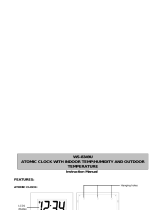 La Crosse Technology WS-8349U User manual
La Crosse Technology WS-8349U User manual
-
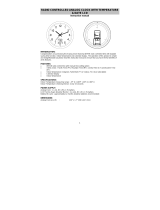 La Crosse Technology WT-3132 User manual
La Crosse Technology WT-3132 User manual
-
 La Crosse Technology WS-8256U User manual
La Crosse Technology WS-8256U User manual
-
La Crosse Technology WS-9412U User manual
-
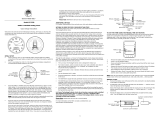 La Crosse Technology WT-3128U User manual
La Crosse Technology WT-3128U User manual
-
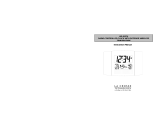 La Crosse Technology WS8157U User manual
La Crosse Technology WS8157U User manual
-
 La Crosse Technology W86531 User manual
La Crosse Technology W86531 User manual
-
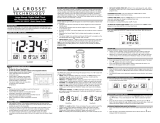 La Crosse Technology 513-1311OT Quick Setup Manual
La Crosse Technology 513-1311OT Quick Setup Manual
-
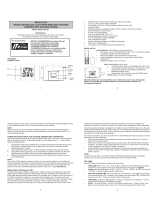 La Crosse Technology WS-8117U-IT Quick Setup Manual
La Crosse Technology WS-8117U-IT Quick Setup Manual
-
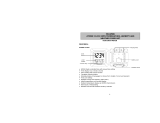 La Crosse Technology WS-8256U User manual
La Crosse Technology WS-8256U User manual
















